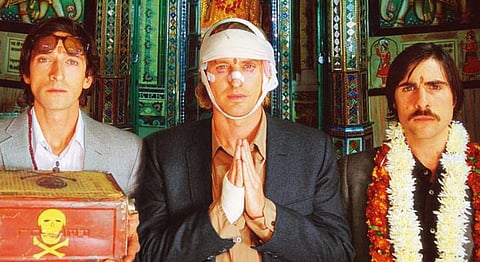
- HOMEGROWN WORLD
- #HGCREATORS
- #HGEXPLORE
- #HGVOICES
- #HGSHOP
- CAREERS
- ABOUT US
- CONTACT US

The genius of Satyajit Ray is un-contestable and unparalleled, the polymath was unlike any other and was a writer, director, composer (who composed the scores for all his movies post Three Daughters, also collaborating with the music maestro Ravi Shankar), designer (actively involved in the art, costumes, storyboards and posters for his films, going so far as designing the calligraphy for the opening credits in films) and a cinematographer. He was also a self-taught painter and a scholar of Bengali Literature.
Underappreciated and underrated for his time, director Ray’s films were definitely a revolutionary moment in filmmaking and in bringing forth Bengali narratives in a more humane way. His films were unique in the way that they engaged with a more contemporary form of storytelling. His influence on the social fabric of Bengal and his ability to bring social realism to Indian cinema and filmmaking are unmatched to this day and he can be considered a pioneer in characterizing the framework of a society post-partition and in helping a culture redefine itself post imperialism. He was also the first Bengali and Indian to receive the Academy Honorary Award in 1992.
So it comes as no surprise that filmmakers of Hollywood were highly influenced by the genius and looked up to him with awe. Among those that openly admired and were influenced by his works were American filmmakers Wes Anderson and Martin Scorsese.
Wes Anderson And The Ray Connect
In fact, Wes Anderson went so far as to dedicate his fifth film, The Darjeeling Limited, to Satyajit Ray. In an interview with a local Rajasthani paper, the Statesman during the release of the film in 2007, he admitted to Ray’s influence on his filmmaking, saying “[Ray’s] work has been an enormous influence on [“The Darjeeling Limited”]… He was my inspiration for coming to India in the first place,” adding “He is the reason I came here, but his films have also inspired all my other movies in different ways, and I feel I should dedicate the movie to him.”
For the fifth feature, The Darjeeling Limited, Anderson borrows Ray’s music score ‘Charu’s Theme’ from the film Charulata, which bounds the tragi-comedy of the Whitman brothers together in the film; serving as a beautiful leitmotif.
“It’s some of the most unique music that we’ve ever used,” Anderson had told Rolling Stone at the time, adding, “I had to personally introduce myself to the Satyajit Ray Family and Foundation and convince them that it was worthwhile to digitize all of his master tapes. I wound up sitting in Calcutta for five days waiting for them to hand them over. But that was one of the great experiences of my life.”
In true Anderson fashion of compartmentalizing films into beautiful and vibrant boxes and sets, The Darjeeling Limited is majorly set in an Indian train, though the interiors are a confluence of Parisian aesthetics and Indian aesthetics. The final scene of the film involves the Whitman brothers— Jack, Peter and Francis running after the train, ‘Bengal Lancer.’ The allusions to Ray are undeniable and clear when the men almost resemble Durga and Apu from Ray’s film Pather Panchali where they are seen running across the village meadows as a train whistles in the distance.
Ray’s Influence On Pop-Culture & Cult Classics
It isn’t just Anderson who has been influenced by Ray, Film critic Michael Sragow has talked about how Ray’s Apu trilogy is a defining moment in pop-culture and has had farther-reaching impacts than one could have imagined, one that has influenced many coming of age stories but most importantly influenced the creation of the Indian convenience-store owner Apu on ‘The Simpsons’ (voiced by Hank Azaria).
Steven Spielberg’s cult classic E.T. too was heavily influenced by Ray’s work and Martin Scorsese was one of the few who chose to speak publicly about Ray’s influence on the film. Ray’s film titled The Alien was based on a short science-fiction he wrote in 1962 for a Bengali magazine Sandesh called Bankubabur Bandhu (Banku Baba’s Friend). Supposedly, Peter Sellers and Marlon Brando were cast in the lead and Columbia Pictures were chosen as producers in the U.S.-India co-production. But when Ray found out that the script had been copyrighted with a fee, he dropped out of the project.
Spielberg’s E.T. draws from the script of The Aliens (even though Spielberg denies these claims) with Ray commenting that “...(the film) would not have been possible without my script of ‘The Alien’ being available throughout America in mimeographed copies”, accusing him of plagiarising his work. Despite Spielberg denouncing the claims of plagiarism, the parallels between the two stories are stark and a little too reminiscent of Ray’s influence.
If you enjoyed reading this article, we suggest you also read:
